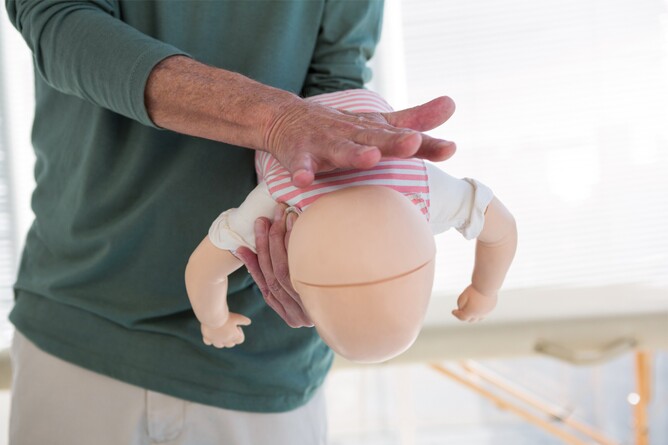Small children have smaller airways and their behaviours around eating make them at higher risk for choking. Being aware of foods that are common for children to choke on and come with a higher risk is important to reduce the chance of a choking incident. Of course, children can choke on many different things but here are the top 6 choking hazard foods for children under 5.
1. Grapes
The perfect shape and size to completely block an airway and they are also slippery with a thick skin on them which is a big choking hazard.
Cherry tomatoes, blueberries, etc all have this risk.
So cut them up in to quarters, lengthwise to reduce that risk.
2. Sausages
Once again their shape, size and texture (spongey), make them a common food for children to choke on. (Same goes for marshmallows)
Cutting them into coin size discs doesn’t help and actually increases the risk of a complete blockage. These are best cut lengthwise into strips rather than circles.
3. Hard lollies or lollipops
Difficult to bite or chew for little ones and can easily slip down the wrong way if they are sucking on a lolly. Lollipops can come off the stick and then slip back in to the airway.
Avoid hard lollies for under 5’s, and flat lollipops are better than round, spherical ones.
4. Apples
Raw apples become a choking risk when a big chunk is bitten off. Also carrots and other hard fruits and vegetables.
For babies always give them cooked and soft. For toddlers, grate or slice thinly or into thin sticks.
5. Popcorn
This popular snack is very light so is very easily inhaled. Another risk is that smaller bits of popcorn can break off and be inhaled further into the airways and into the lungs causing respiratory infections.
Best to avoid in children under 5.
6. Nuts and seeds
These small hard foods are difficult for small children to bite and chew safely making them another choking risk.
Avoid whole nuts for under 5’s. However, it is recommended by the Australasian Society of Clinical Immunology and Allergy to introduce nuts before 12 months to reduce the risk of allergies so you can do this by using smooth nut butters as long as these are spread thinly, as thick layers can cause a choking hazard.
Other things to do to avoid choking situations and be able to act quickly if it happens:
- Keep them seated
- Keep them supervised. Choking is silent! You may not hear it happening if you aren’t watching. This is also a good reason to not let them eat in the car.
- Prepare foods appropriately to reduce the risk
- No distractions (so they concentrate on what they are doing)
- Most importantly, all parents should be up to date with first aid for choking and CPR for children in case the situation arises. At a first aid session with Little Beat you will learn how to recognise choking vs gagging, prevention, and what to do if it happens. If you haven’t been to a session, enquire now to be prepared.
Please note: Blog posts are rarely updated after the original post and all info is current at time of posting. All information provided is for information and awareness purposes only and not intended for use as personal medical advice. Always speak with a health care professional for individualised medical advice.



